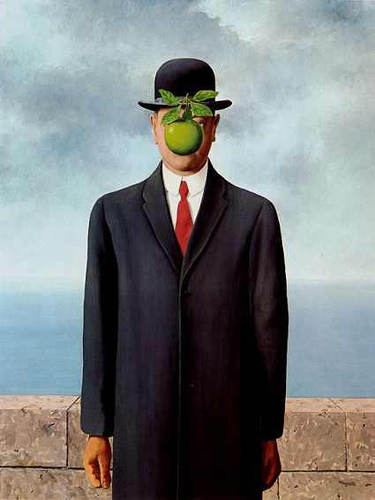
Max Ernst was born in Bruhl, Germany on April 2, 1891. In 1909, he enrolled in the University at Bonn near his hometown to study philosophy but soon abandoned the courses. Then he began painting even though he had never received any formal artistic training. Once World War I erupted he was recruited to serve in the German Army. This proved to be a huge conflict in this artistic career.
After the war ended, Ernst returned home filled with new philosophical ideas. He then with the help of Jean Arp and local social activist Alfred Grunwald formed the “Cologne Dada group.” In 1919, Ernst gained inspiration from Paul Klee began to create block prints, collages, and began to experiment with various mixed media techniques. As an artist, Ernst was always experimenting and in 1925 he invented a graphic art technique called frottage. He also explored with the technique of decalcomania which involves pressing paint between two surfaces.
While creating his artistic career, Ernst developed an alter ego which was prevalent in his work. He named this alter ego Loplop who in his painting was a bird. His alter ego often appeared in collages from other artists' work at the time, such as Loplop presents André Breton. Throughout Ernst carrer he drew a great deal of controversy, especially with his 1926 painting The Virgin Chastises the infant Jesus before Three Witnesses: André Breton, Paul Éluard, and the Painter. It is also thought that his wife, Marie-Berthe Aurenche, may have inspired the erotic subject matter in The Kiss and other famous paintings.
In 1930, he appeared in the film L'Age d'or directed jointly by artist Salvador Dali and Luis Bunuel. In 1934, Max Ernst began to make sculptures and spent time with Alberto Giacometti. Once the eruption of World War II, he moved to New York to continue his artistic career and is known as one of the founding inspirations of Abstract Expressionism.
Max Ernst moved around the United States with various wives, until he decided to settle down back in his homeland of France in 1953. He continued to create artistic works however, he created controversy over his painting as he did earlier in his career. Max Ernst died on April 1st, 1976 in Paris, France and is known as one of the main representatives of Dada and Surrealism art movements.
Works Cited
Olga's Gallery. "Max Ernst biography"
"Max Ernst working in decalcomania is in shown in the 1978 documentary on the Dada and Surrealist art movement," Europe After the Rain.
Flint, Lucy, Guggenheim Collection. "The Kiss (Le Baiser)".
A Max Ernst Retrospective Opens Today in NY, ARTINFO, April 7, 2005, http://www.artinfo.com/news/story/117/a-max-ernst-retrospective-opens-today-in-ny/.
Retrieved on 23 April 2008
Images Cited:
"The Metropolitan Museum of Art, New York." The Metropolitan Museum of Art, New York. 30 Oct. 2008 http://www.metmuseum.org/special/Max_Ernst/view_1.asp?item=4&view=l.
"The Chess Theory Art." The Chess Theory. 31 Oct. 2008 http://www.chess-theory.com/images1/82001a_max_ernst.jpg.

No comments:
Post a Comment